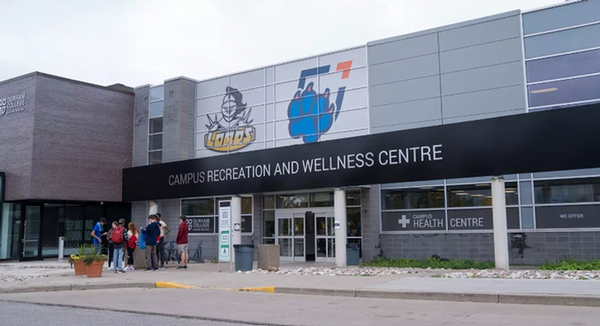Germ hotspots: Navigating campus with caution
October 21, 2024
Indeed, germs are everywhere, but some places are more popular than others. Check out where the germ hotspots are on campus, and learn how to keep yourself protected!
As the COVID-19 pandemic has taught us all, germs are everywhere. These microorganisms can be harmless or cause serious diseases that can affect the health of individuals, groups, or entire populations. Certain circumstances allow germs to thrive, but there are steps we can take to reduce the risk of allowing potentially harmful germs to thrive. On our campus, there are many hotspots that germs can thrive in. Knowing where these hotspots are and practicing simple hygiene habits can help us keep our campus clean!

Washrooms
Public washrooms are common sites for strep throat and salmonella-causing germs to thrive, like Staphylococcus aureus and E. coli. Handwashing and hand-drying facilities in public washrooms are necessary, but studies have shown that they can also be reservoirs for bacteria; this is where hand sanitizers can help. They’re alcohol-based, making them great antiseptics. Hand sanitizer, followed by soap and water, can aid in killing any remaining microorganisms and decreasing any potential spread.
Proper hand cleaning techniques can help to protect you from potentially harmful germs. Practice cleaning your hands before eating or touching your face.
Door Handles
Studies on university campuses suggest that the bacteria Staphylococcus aureus can be present in restrooms, offices, and lecture hall door handles. This bacterium can result in skin infections that, in the most serious cases, can result in hospitalization. Maintaining good personal hygiene practices through frequent hand washing and sanitizing can help lower the transmission risk.
Personal Items
Our phones, laptops, water bottles, bags, and coats are just items we keep while on campus. Bringing these items into washrooms is uncommon, which puts them at risk. Studies have demonstrated that bringing personal items into the washroom with you increases their risk of contamination, especially items placed on the floor or the toilet. As we exit the washroom, we bring the germs with us. This means both ourselves and those sharing our spaces are exposed.
To reduce the risk of carrying germs on your items, leave them outside the washroom, either with someone you trust or in an area you trust. Alternatively, if you’d prefer to take your items into the washroom with you, leave them on the countertop, a chair, or a table to avoid bringing them into the stall. Although it’s not recommended, our cell phones often go into the washroom with us. If this is the case, carry wipes to wipe it down. Get into the habit of wiping down your laptops, cellphones, and water bottles daily to keep them clean. These are the items we touch the most, so they require a little bit of extra effort!
Food courts and cafeterias
Food courts and cafeterias are another hotspot for germs. Studies have shown that food service areas on post-secondary campuses are at risk of high levels of cross-contamination when cleaning and sanitizing practices are insufficient. For this reason, it’s a good idea to take extra precautions by wiping any surfaces, especially if you see that it is heavily soiled before sitting to eat.
Other ways to maintain personal hygiene
Good personal hygiene habits make our bodies less appealing to germs, making us less susceptible to diseases. Here are the habits we should be cultivating:
- Shower regularly to maintain menstrual, genital, and overall body hygiene.
- Since we touch our face at least 16 times an hour, keep your nails and hands clean, and wash your face before bed.
- Clean the toilet seat before sitting down and close the toilet seat before flushing.






